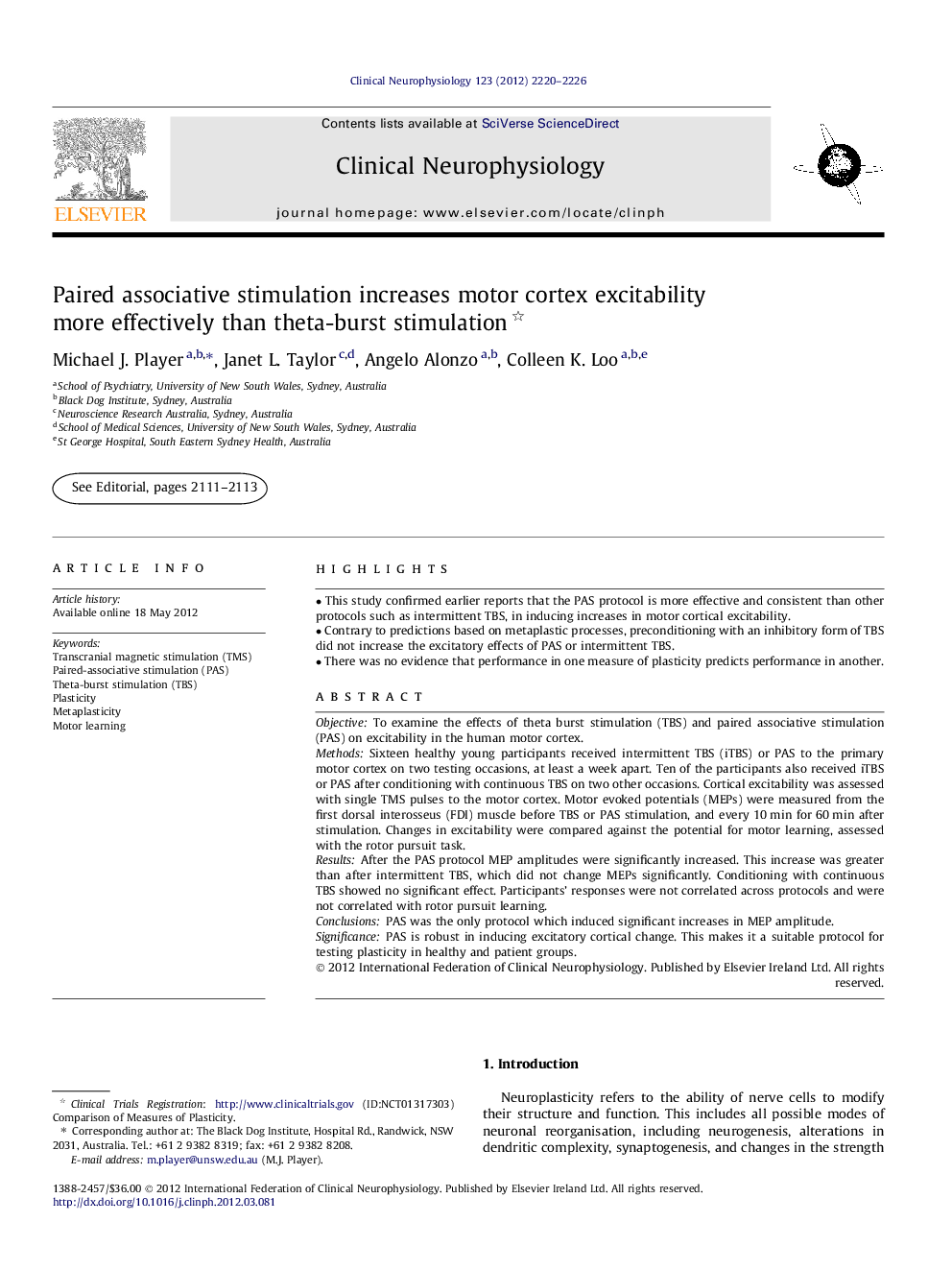| Article ID | Journal | Published Year | Pages | File Type |
|---|---|---|---|---|
| 3043112 | Clinical Neurophysiology | 2012 | 7 Pages |
ObjectiveTo examine the effects of theta burst stimulation (TBS) and paired associative stimulation (PAS) on excitability in the human motor cortex.MethodsSixteen healthy young participants received intermittent TBS (iTBS) or PAS to the primary motor cortex on two testing occasions, at least a week apart. Ten of the participants also received iTBS or PAS after conditioning with continuous TBS on two other occasions. Cortical excitability was assessed with single TMS pulses to the motor cortex. Motor evoked potentials (MEPs) were measured from the first dorsal interosseus (FDI) muscle before TBS or PAS stimulation, and every 10 min for 60 min after stimulation. Changes in excitability were compared against the potential for motor learning, assessed with the rotor pursuit task.ResultsAfter the PAS protocol MEP amplitudes were significantly increased. This increase was greater than after intermittent TBS, which did not change MEPs significantly. Conditioning with continuous TBS showed no significant effect. Participants’ responses were not correlated across protocols and were not correlated with rotor pursuit learning.ConclusionsPAS was the only protocol which induced significant increases in MEP amplitude.SignificancePAS is robust in inducing excitatory cortical change. This makes it a suitable protocol for testing plasticity in healthy and patient groups.
► This study confirmed earlier reports that the PAS protocol is more effective and consistent than other protocols such as intermittent TBS, in inducing increases in motor cortical excitability.► Contrary to predictions based on metaplastic processes, preconditioning with an inhibitory formof TBS did not increase the excitatory effects of PAS or intermittent TBS.► There was no evidence that performance in one measure of plasticity predicts performance in another.
